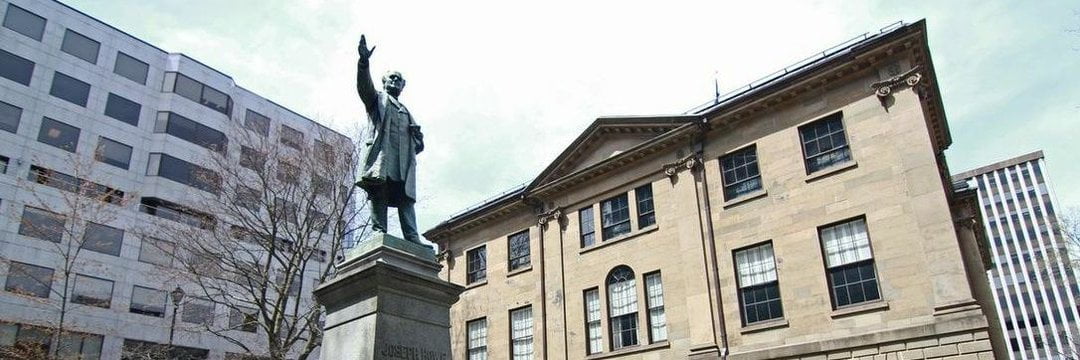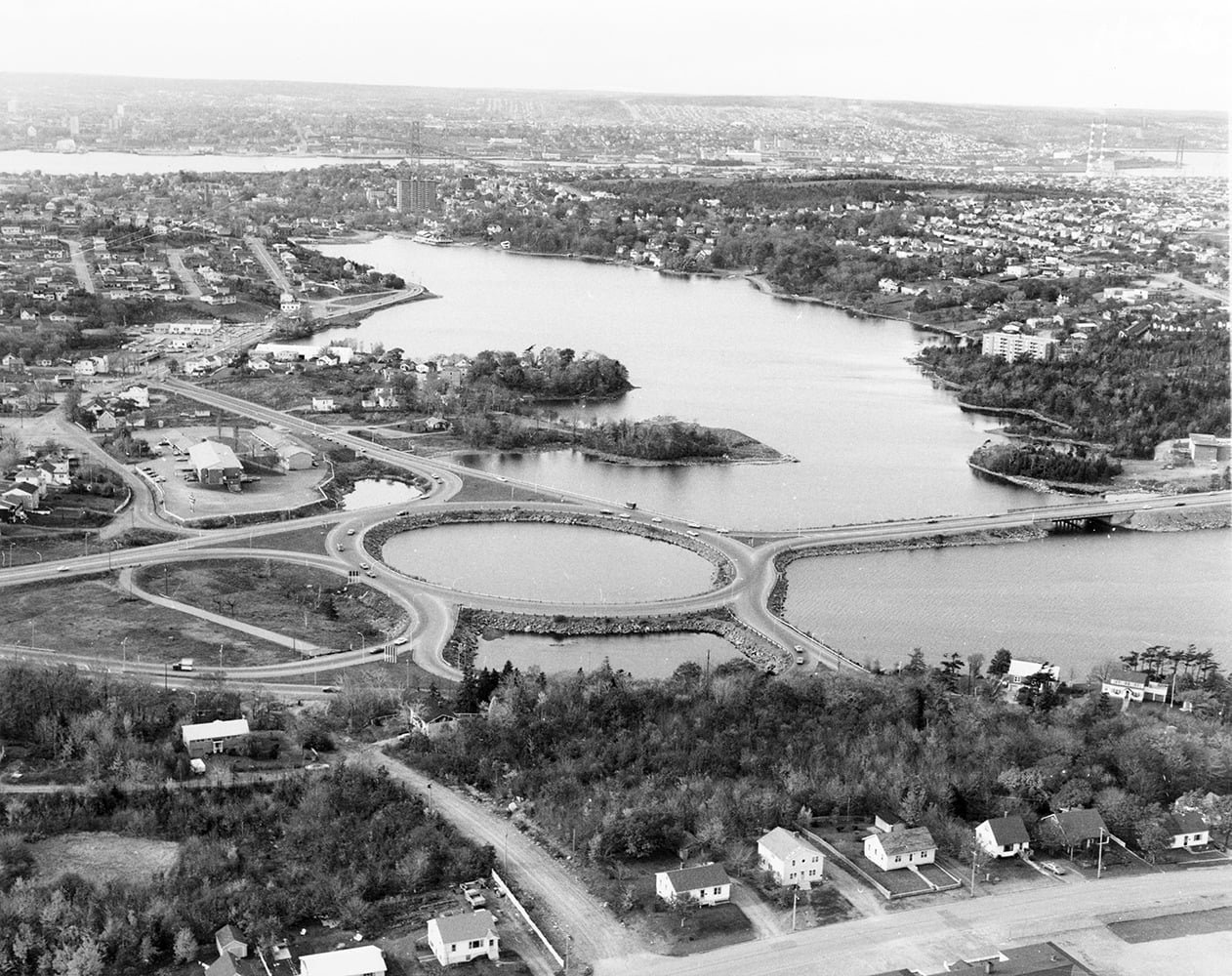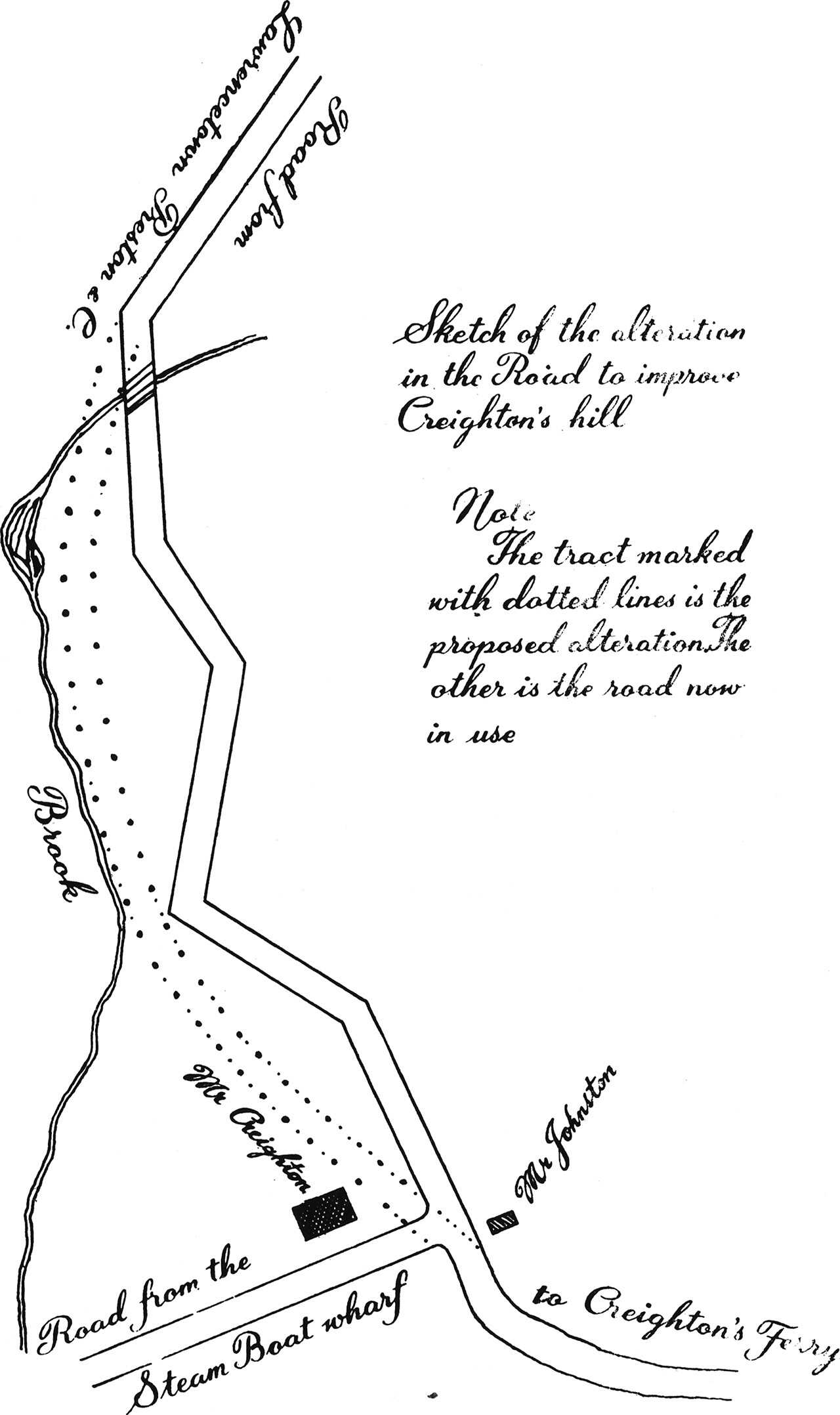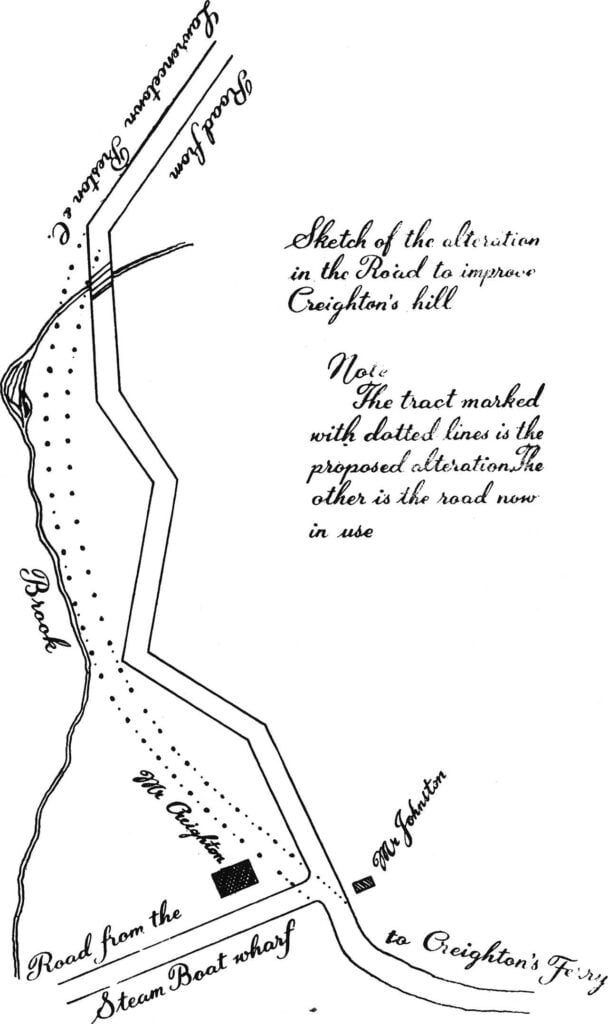This paper recounts three trials for seditious libel in Nova Scotia, drawing parallels between Joseph Howe’s trial in 1835, F.J. Dixon’s trial in 1920, and J.B. McLachlan’s trial in 1923. Howe’s trial, though acquitted, established him as a folk hero due to his successful self-defense. Dixon, emulating Howe’s defense, was also acquitted, while McLachlan’s trial, marked by government manipulation and interference, resulted in his conviction and imprisonment.
McLachlan’s case, unlike Howe and Dixon’s, exemplifies a miscarriage of justice, orchestrated to suppress the working-class. Despite legal efforts inspired by Howe’s defense, McLachlan’s trial failed to challenge the unjust system. The analysis emphasizes the significance of these trials in Nova Scotia’s legal and political history, showcasing struggles against state oppression and the impact of legal and political maneuvering on outcomes.
“Then there is Howe, who was prosecuted by the corrupt magistrates whom he exposed in his day. By the way, he successfully defended himself, and I hope to perhaps follow his glorious example. He is now proclaimed as Nova Scotia’s noblest son.” — FJ. Dixon, 1920
“When they tried Joseph Howe for sedition, they erected a monument to him in the shadow of the County jail [sic: Province House yard].” — J.B. McLachlan, 1924

“I am not a prophet, nor the son of a prophet, but I tell you that what happened to Howe will happen to McLachlan.” — J.S. Woodsworth, 1924
In Halifax, in 1835, Joseph Howe, a newspaper proprietor and editor, was tried for seditious libel for publishing the second of two pseudonymous letters critical of local government. In Winnipeg, in 1920, F J. (Fred) Dixon, an independent labour member of the Legislative Assembly of Manitoba, was tried for seditious libel for publishing in the strike bulletin which he briefly edited during the General Strike of 1919, articles critical of the strike’s suppression. In Halifax, in 1923, J.B. McLachlan, communist secretary of United Mine Workers of America District, was tried for seditious libel for having written an official letter critical of the violent actions of the provincial police in Sydney. These three “state trials” document the important historical conflicts out of which they arose, reflect the politico-legal contexts in which they occurred and illustrate the meaning of the “misrule of law” as it developed through the repressive exercise of state power during both the colonial and the national periods.”
“Ironically, the industrial action which led to the prosecution of McLachlan did not originate with the Cape Breton coalminers. In June 1923, Sydney steelworkers struck again for recognition of their union. When mounted provincial police, who had been summoned at the behest of the British Empire Steel Corporation (Besco), made a bloody charge against the Sunday evening crowd on Victoria Road in Sydney on July 1, McLachlan, in his capacity as secretary of District 26, authorized a wildcat strike. “This was a fateful decision,” writes David Frank, quoting McLachlan’s official letter (sea Appendix 1), one that brought down the wrath first of the provincial government and then of the international union. For his call to arms McLachlan was charged with seditious libel and subsequently sentenced to two years in jail. For his violation of international union polity in calling the sympathetic strike he was removed from office by John L. Lewis [president] of the United Mine Workers. McLachlan was prosecuted because he was the leader of an illegal sympathetic strike. The seditious libel for which he was convicted was an official letter signed and ordered circulated by McLachlan in his capacity as secretary of District 26 of the UMWA.”
“The parallels to Howe rest with Fred Dixon, who was acquitted after defending himself in a great forensic address purposely modelled on Howe’s. McLachlan, on the other hand, was dissuaded from defending himself, did not testify on his own behalf and was perfunctorily convicted. “[C]ivil libertarians, then and since,” according to Howe’s biographer, Murray Beck, “have excoriated the [McLachlan] trial for its alleged unfairness.” Yet, Beck too refuses to acknowledge any parallels between Howe and McLachlan. He forbears describing Howe as “seditious libel,” a technical term he uses in relation to McLachlan, and does not confront the suspicion that chief counsel for the defence, Gordon Sidney Harrington K.C., (in David Frank’s words) “deliberately exploited the case to promote the fortunes of the Conservative Party and prove the iniquity of the Liberal government.” Beck also fails to identify “McLachlan’s lawyers” as two politically ambitious Conservative barristers — the other was Halifax labour lawyer, John Archibald Walker — both of whom were elected to the Assembly in the Conservative sweep of 1925 and appointed to the cabinet. Harrington, a former mayor of Glace Bay, which was also home town to McLachlan and headquarters of District 26 of the UMWA, was counsel to the union.”
“McLachlan — unlike Howe and Dixon — was a gross miscarriage of justice, in which the accused was “framed”, charged, tried, convicted and imprisoned for having published a seditious libel when in neither the legal nor the ordinary sense of the word had he published anything at all. Before the “fixed” publication, the Crown did not have even a prima facie case against the accused. The obvious motive for the government’s conniving at newspaper publication was not only to lay the basis for the charge of seditious libel, but also to give some reason for McLachlan’s incarceration and transportation to Halifax, which Attorney-General O’Hearn was later to characterize as “a neutral [safe?] county.” The very possibility of contesting the legal repression – by achieving a counter-hegemonic success à la Howe and Dixon — was precluded by the careful manner in which the government stage-managed the proceedings against McLachlan from beginning to end. Circumstantial evidence suggests that the McLachlan prosecution was the result of a conspiracy involving the Red-baiting provincial Liberal government, the management of Besco and the proprietor of the Morning Chronicle — the only Halifax newspaper in which McLachlan’s official letter was published. The District circular appeared verbatim on the front page of the edition of 6 July 1923 — a mere two days after it was issued — under the incendiary sub-headline, “McLachlan’s War Whoop.” Publication in Halifax had been arranged by Andrew Merkel, Maritime superintendent of The Canadian Press, whose vice-president, George Frederick Pearson, was also hereditary president of the Chronicle Publishing Company Limited. A lawyer and highly influential political insider — Beck describes him as “long a mastermind of the Liberal Party” — G. Fred Pearson was also Besco’s solicitor. Though McLachlan’s conviction for publication in Halifax was eventually struck down on appeal, at the time of the trial even the strongest legal defence would have been ineffectual against a government partial to Besco, a mass-circulation morning newspaper complicitously toeing the government’s line, an “anti-Bolshevik” Attorney-General prosecuting in person, a manipulable jury altogether unacquainted with labour-management relations in industrial Cape Breton, and an highly interested judge. Presiding over McLachlan was Justice Humphrey Mellish, a corporate lawyer and former solicitor for the Dominion Coal Company — who was elevated to the bench in 1918, so that he could more effectively protect the interests of his former corporate clients. The fact that Mellish’s law firm, Mclnnes Jenks Lovett & Macdonald [now Mclnnes Cooper & Robertson], was in Besco’s pocket — the senior partner, Hector Mclnnes, was a director of the corporation — was sharply emphasized by J.S. Woodsworth MP in House of Commons debate in March 1924, following the announcement of the government’s decision to parole McLachlan. Woodsworth, who toured Nova Scotia in January 1924 at the invitation of the Nova Scotia Workers Defence Committee, enquired “concerning the judges of the supreme court, and… was told that the corporation influence on the bench was so strong that the court is looked upon by labour as a company department.” Charges of seditious libel against Woodsworth, a former editor of Winnipeg’s Strike Bulletin, were indefinitely stayed when Fred Dixon was acquitted of the same charge. Woodsworth read into Hansard the words uttered by Joseph Howe before the jury while introducing his discussion of The Libel Act 1792: It is ninety years since in Nova Scotia a man was tried for sedition. Then a man was haled before the courts and accused of being “a wicked seditious and ill-disposed person, a person of most wicked and malicious temper and disposition.” That man is now regarded as one of Canada’s greatest sons, Joseph Howe. But he was able to say at that time, in connection with his trial: “And here I may be permitted to thank heaven and our ancestors, that I do not stand before a corrupt and venal court and a packed and predetermined jury.’,
Joseph Howe’s trial for seditious libel, eighty-eight years before McLachlan’s, has never been excoriated for unfairness by civil libertarians or anyone else, because Howe was tried by an impartial, disinterested judge — Chief Justice Brenton Halliburton — and acquitted by an enlightened jury. Indeed the canonical, politico-biographical interpretation of Howe does not consider the possibility that this too was a trial for sedition, lest it be compared with the trial of the politically persona non grata working-class radical, J.B. McLachlan. Repeated ad nauseam is the canard that Howe was tried for “criminal” libel, suggesting that the dual character of defamation as crime and tort could disprove the self-evident truth that Howe too was tried for seditious libel. Indeed the very success of Howe’s self-defence accounts for this misunderstanding of his trial, which resulted in an acquittal despite the fact that the truth of a libel was not pleadable except as a defence to an action, and that neither truth nor public benefit could be pleaded in justification of a seditious libel.”
“Joseph Howe — it needs to be said — was neither arrested nor jailed, though he expected to be and arranged for bail to be posted by his friends, while McLachlan and Livingstone were not only arrested, transported to Halifax and imprisoned, but were initially denied bail at the instance of the Crown. Nor was Howe’s venue changed from Halifax to Sydney, to be tried by a jury of coalminers, who had as little understanding of abuses in the administration of local government in the District of Halifax as the jury of Halifax petit-bourgeois who convicted McLachlan had of labour relations in industrial Cape Breton. The Crown failed to make its case in Howe and Dixon and would have failed to do so in McLachlan had he too been tried by a jury of his peers. Howe — tried and acquitted by sympathetic friends and neighbours and readers of his reformist newspaper, the Novascotian — was thought by the Halifax bar, who to a man refused his retainer, to be foredoomed. Conversely, McLachlan’s lawyer, seeing in his client a latter-day Howe, was overconfident of victory.”
“In preparing his defence of McLachlan, Harrington, like Dixon, availed himself of The Speeches and Public Letters of Joseph Howe, a new and complete edition of which had been produced in 1909 in a commendably bipartisan manner. The publisher was the Halifax Chronicle, the Liberal Party organ founded in 1844 and once edited by Joseph Howe, while the reviser was the prominent Conservative lawyer and municipal politician, Joseph Andrew Chisholm K.C. Chisholm, who in 1916 acceded to a puisne judgeship, played a significant collateral role in the proceedings against McLachlan. In June 1923, he presided at the criminal assizes in Sydney, when, according to Attorney-General O’Hearn, “in the neighbourhood of twenty-odd bills of indictment against strikers for their criminal activities in February 1923, were thrown out” by the grand jury for lack of witnesses willing to testify. Chisholm was also, according to J.S. Woodsworth, one of only two of seven judges of the Supreme Court of Nova Scotia who had had no “known relations” with Besco or its constituent operating companies.”
“What mattered were the changes in Canada between 1919 and 1923. By the latter date, sedition law was being used systematically against working-class radicals in general and strike leaders in particular, regardless of their lack of socialist credentials — a tendency strikingly illustrated by the prosecution of Fred Dixon MLA. Not only had new repressive state security laws been introduced, but also the state’s determination to repress working-class radicalism had been renewed since 1919 and the range of potential uses of existing sedition law accordingly broadened. If the significance of Howe for McLachlan relates more to the forensic use of history than to the forensic use of law, then McLachlan is an object lesson in the failure of legal history as legal argument. It is not a question of the uses or sources of law, however, because Howe, as a jury trial resulting in an acquittal did not form a legal precedent. Howe in relation to McLachlan concerns the historical uses of law versus the juridical uses of history, and in either respect depends upon a mutually agreed, authoritative and analytically sound reconstruction of the leading case. When the Crown denied the existence of any previous trials for sedition in Nova Scotia, the defence attempted unsuccessfully to adduce Howe as a precedent.”
“G.S. Harrington, who had never practised in Halifax and was far from being the “noted barrister” of John Mellor’s rose-coloured romance, was facing one of the leading criminal counsel of the Halifax bar in Attorney-General O’Hearn. Harrington nevertheless aimed to achieve, without any help from his client, whom he did not call to testify in his own defence, what Howe and Dixon had achieved by unassisted advocateship. The upshot was that Howe immediately became a “folk hero,” and ultimately a figure of Olympian myth. His trial became the defining moment in the political history of the province. Dixon was overwhelmingly re-elected to the Manitoba legislature in the general election held four months after his acquittal. McLachlan, however, remained a working-class anti-hero, whose trial and unsuccessful appeal, in David Frank’s words, “passed on into the untapped obscurity of legal history.” Scholars of Howe have failed to acknowledge the resemblance of the McLachlan sedition trial to the Howe sedition trial. They seem unaware that seditious libel at common law is sedition not libel, and that Howe was not on trial for defamation, but for a crime against the state. The politically and socially dangerous implication for the historiography is that Howe, the petit-bourgeois “conservative reformer,” would be coloured by association with McLachlan, the working-class radical and Bolshevik pariah. Yet, at the time of his own sedition trial Howe did not consider himself, nor did his friends or enemies consider him to be conservative in any sense of the word. That Howe stood four-square in the English radical whig tradition is clear from a close, impartial reading of the stenographic report of his courtroom address in his own defence.”
“In that sense, J.B. McLachlan no less than Fred Dixon was a legatee of Joseph Howe, as well as the provider of a legacy of working-class political radicalism — and his forerunners were the radical reformers of a century earlier. Excepting only McLachlan, the study of sedition in Nova Scotia has been obfuscated by the “criminal libel” misnomer such that the seditious libel prosecutions of William Wilkie in 1820 and Joseph Howe in 1835 are not seen for what they undoubtedly were: show trials staged by the ruling class to counter the perceived threat to the established order posed by ancillary crimes against the state. Just as Howe implicitly compared himself to the English radicals of the period of extreme Tory reaction in the late eighteenth and early nineteenth centuries — many of whom were tried and convicted of seditious libel — so the comparison with Howe was advocated by McLachlan’s senior counsel, the Conservative lawyer-politician Harrington. If the radical pamphleteer William Wilkie — tried and convicted of seditious libel in 1820 after an unsuccessful self-defence conducted along the same lines as Howe’s fifteen years later — was a forerunner of Joseph Howe, then Howe was a forerunner of J.B. McLachlan, who assumes a place of honour within the century-old tradition of political protest and trials for sedition in Nova Scotia. McLachlan, writes David Frank, “was a political trial, part of a Canadian tradition we have found it all too easy to forget. These kinds of trials, such as Joseph Howe’s in 1835, had long pitted the forces of change against the forces of continuity.””
“Clearly a line of defence which did not result in a verdict of not guilty was “an ineffectual one”; however, to criticize it as incoherent, as David Frank does, is ex post facto rationalization. Just as scholars of Howe have disposed of some archetypal myths — such as that the verdict established freedom of the press — only to replace them with others, so students of McLachlan fail to recognize that one of the lessons of that case is that criminal law and criminal justice history are not necessarily combinable in the context of legal proceedings. Political trials, however significant they may be in other respects, are not necessarily significant sources of law. Frank, for example, argues that counsel for the defence in McLachlan “probably unreasonably, accepted the argument that truth was no defence in a case of seditious libel.” Harrington’s acceptance of what had long been a settled principle of the common law can hardly be considered unreasonable for a lawyer pleading in a criminal court. Moreover, Harrington’s failure to recognize that one of the lessons of Howe was that the restriction on truth as a defence “could be easily evaded in the process of clarifying the defendant’s intentions” is fully consistent with his argument on appeal that seditious libel law was unaffected by the passage of The Libel Act 1792. There the jury’s right to “find” intention as a matter of fact was explicitly affirmed. The problem with Harrington’s defence was not incoherence but error of law. The Libel Act 1792 was the very statute which enabled Howe to evade this common law restriction on defence pleading in the course of clarifying his innocent intentions.
As John Mellor correctly states, Harrington “had based his whole case on the famous Joseph Howe and his acquittal on a similar charge of seditious libel.” Harrington either did not understand or failed to elucidate the legal justification for Howe’s acquittal. He not only misunderstood the implications of The Libel Act 1792 for sedition law, but also mistook the legal heart of Howe’s defence. Harrington nevertheless believed that he could defend McLachlan in the same manner and with the same success as Howe had defended himself. Despite the fact that McLachlan was not defending himself, and that Howe had called no witnesses, there seemed to Harrington little point in putting the accused in the witness-box, to be exposed to a withering, ideologically perverse cross-examination by the Attorney-General. “It was generally believed,” according to Mellor’s hearsay: that if Harrington had arranged for defence witnesses to give evidence for McLachlan at the trial, he could quite possibly have won an acquittal, but instead, Harrington had based his whole defence on drawing an analogy between the famous Joseph Howe case, which had ended in acquittal, and the McLachlan case with its communist overtones. This is an aspect in which McLachlan and Dixon differ; Dixon was a non-socialist, while McLachlan was a revolutionary socialist who could scarcely have been permitted to speak candidly in his own defence in open court.”
Just as the legal argument from analogy failed to obtain an acquittal for McLachlan, so the argument from legal history has failed to obtain recognition of McLachlan as a case which merits judicial reconsideration. As recently as 1990, the authors of an essay on the historiography and sources for the study of Russell could claim that “[t]he legal history of the Winnipeg General Strike trials has yet to be written.” The same may be said for the legal history of working-class radicalism in Nova Scotia.”
Cahill, Barry. “Howe (1835), Dixon (1920) and McLachlan (1923): Comparative perspectives on the legal history of sedition.” University of New Brunswick Law Journal, vol. 45, 1996, journals.lib.unb.ca/index.php/unblj/article/view/29601
















